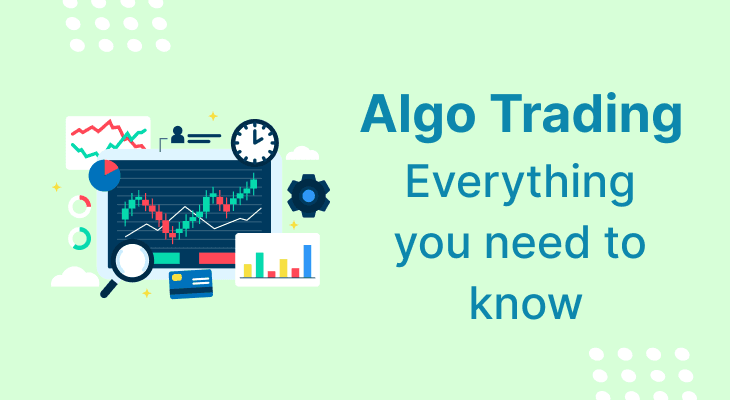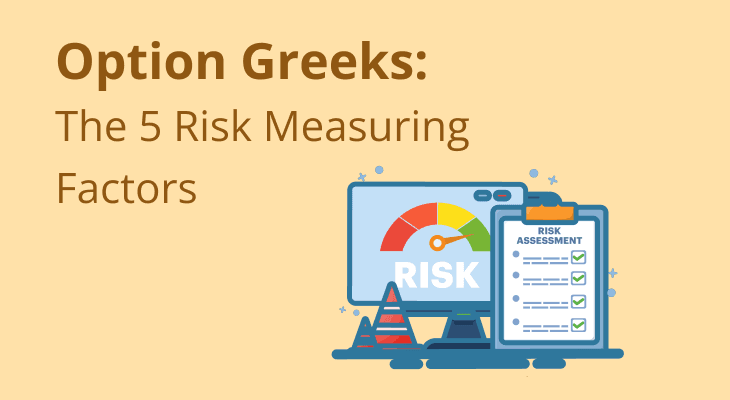
What is Algo Trading?
Algorithmic trading, often referred to as algo trading, is a relatively recent innovation in the field of stock market trading. Leveraging computer programs and complex algorithms, it enables traders to execute orders at speeds and frequencies nearly impossible for human traders priorly. In this comprehensive guide, we will explore the nuances of algorithmic trading, from its basics to advanced strategies and practical implementation.
Understanding Algorithmic Trading
Algorithmic trading involves using computer algorithms to automate trading decisions. These algorithms follow a predefined set of rules or instructions to execute trades based on various factors such as price, timing, and volume. What is algo trading in the stock market? It’s essentially a method that eliminates human errors and emotional biases, leading to more efficient and effective trading.
Algorithmic Trading Types
There are several types of algorithmic trading strategies, each designed to meet different trading objectives. Understanding these can help you determine which approach best suits your investment goals.
- Trend Following Strategies: These algorithms identify and exploit trends in the market, buying when prices are rising and selling when they are falling. They rely on technical indicators such as moving averages and channel breakouts.
- Arbitrage Opportunities: These strategies take advantage of price discrepancies between different markets or instruments. For example, arbitrage algorithms might buy a stock on one exchange where it is undervalued and sell it on another where it is overvalued.
- Market Making: Market-making algorithms provide liquidity by simultaneously buying and selling a particular security, earning a profit from the spread between the bid and ask prices.
- Mean Reversion: These strategies are based on the idea that asset prices will revert to their historical averages. When prices deviate significantly from the mean, the algorithm will place trades to profit from the expected reversal.
- Volume-Weighted Average Price (VWAP): This algorithm breaks up a large order into smaller chunks, executing them at intervals that match the historical trading patterns of the stock, thereby minimising market impact.
- Time-Weighted Average Price (TWAP): Similar to VWAP, TWAP divides a large order over a specified time period to achieve an average execution price close to the time-weighted average.
Examples of Algorithmic Trading Systems
Let us take a look at two of the most popular platforms of algo trading that you can consider using to benefit in the stock market.
Black Box Algorithmic Trading
Black box algorithms are proprietary trading systems developed by financial institutions or individual traders. These algorithms are highly confidential, with their inner workings and logic kept secret to maintain a competitive edge. They often use complex mathematical models and leverage high-frequency trading to execute trades at lightning speeds.
Open Source Algorithmic Trading
In contrast to black box algorithms, open source algorithmic trading platforms allow traders to access, modify, and share trading algorithms. These platforms foster collaboration and innovation, enabling traders to build and refine their own algorithms based on shared knowledge and best practices. Popular open source platforms include QuantConnect, Quantlib, and Zipline.
The Pros and Cons of Algorithmic Trading
Although algo trading has revolutionised the way financial markets operate, like any other trading strategy, it has its advantages and disadvantages. Understanding these can help you decide whether it's the right approach for you.
Pros
- Speed and Efficiency: Algorithmic trading can execute trades much faster than human traders, capitalising on market opportunities in milliseconds. This speed allows you to respond swiftly to market changes and news events. Furthermore, its precision ensures that trades are executed exactly as planned, improving the overall accuracy of trading strategies.
- Anonymity: Automated trading ensures orders are processed through computer systems without being exposed on the trading floor. This anonymity helps in executing large trades discreetly, minimising the impact on market prices and preventing other traders from reacting to the orders.
- Unbiased Decision Making: Algorithms operate based on predefined rules, eliminating emotional and psychological biases from trading decisions. This leads to a more disciplined and consistent approach to trading.
- Ability to Backtest: Algorithms can be tested on historical data to evaluate their performance before being used in real-world trading. This backtesting helps identify potential risks and refine strategies, ensuring they are robust and effective.
- Customisation and Control: Despite the automation, you can retain significant control over your trading strategies. You can set specific parameters such as price, quantity, and timing, and adjust the trading pace according to market conditions and investment goals. Orders can also be modified or cancelled instantly.
- Market Access: Algo trading provides faster access to multiple markets and exchanges via high-speed networks. This quick access allows you to take advantage of arbitrage opportunities and execute trades efficiently across different platforms.
- Reduced Market Impact: By breaking down large orders into smaller ones and executing them over time, algorithmic trading can minimise market impact and reduce timing risks. This approach helps in achieving better order completion rates and more favourable prices.
- Elimination of Human Emotions: Automated trading removes emotional biases, leading to more disciplined and consistent trading decisions.
Cons
- Complexity: The complexity of algorithmic trading can be overwhelming, with numerous algorithms available, each with its own unique features and terminologies. Larger firms dealing with multiple brokers may face additional challenges in managing and selecting appropriate algorithms.
- Complacency: Traders might become overly reliant on familiar algorithms, continuing to use them even when market conditions change. This complacency can lead to suboptimal performance and missed opportunities.
- Over-Optimisation: Algorithms that are too finely tuned to historical data may perform poorly in real-world conditions and be less adaptable to future market scenarios, a phenomenon known as overfitting.
- System Failures: Heavy reliance on computer systems means that technical glitches, connectivity issues, and system failures can result in significant losses or missed trading opportunities. Ensuring robust and reliable technology infrastructure is crucial to mitigate these risks.
- Regulatory Risks: Algorithmic trading is subject to strict regulations, and failure to comply can result in fines or other penalties.
- Cost: Developing and implementing algorithmic trading systems involves significant costs. Firms need to invest in high-end hardware, software, and data feeds, as well as ongoing expenses for maintaining and upgrading these systems.
- Lack of Flexibility: Algorithms execute trades exactly as programmed. While this makes them predictable, it can be problematic during unexpected market events. If an algorithm is not designed to handle specific scenarios, it may lead to poor performance and increased trading costs.
Steps to Start with Algorithmic Trading
If you’re interested in exploring what is algo trading in the stock market, here’s a step-by-step guide to get you started:
- Acquire the Necessary Knowledge: Learn the basics of financial markets, trading strategies, and programming languages like Python or R.
- Choose a Trading Platform: Select a brokerage or trading platform that supports algorithmic trading and offers robust APIs for trade execution.
- Develop a Trading Strategy: Create a strategy that aligns with your investment goals and risk tolerance. This could involve trend following, arbitrage, or mean reversion, among others.
- Backtest Your Algorithm: Test your algorithm on historical data to assess its performance and make necessary adjustments.
- Paper Trade: Before deploying your algorithm with real money, use a paper trading account to simulate live trading conditions without financial risk.
- Monitor and Refine: Continuously monitor your algorithm's performance and make adjustments as needed to ensure it adapts to changing market conditions.
Required Capital for Algorithmic Trading
The amount of money you need to start algorithmic trading varies depending on your strategy and the markets you’re trading. Generally, your initial capital requirement should be estimated keeping in mind the following costs:
- Brokerage Fees: Choosing a broker with competitive fees to lower your overall cost. For example, m.Stock gives you a demat account where there is zero brokerage on delivery, IPO, Mutual Funds etc. Moreover, you can save on AMC and other charges too, making your trading experience a more rewarding one.
- Technology Costs: Invest in quality hardware and software, including a powerful computer and stable internet connection. A glitch in your technical infrastructure can be the difference between profit and loss. Furthermore, you also need to have a robust security framework to prevent any malicious online threats.
- Data Feeds: Access to real-time and historical market data is crucial for developing and testing algorithms. The reliability and availability of this data is one of the fundamental pillars of algo trading.
- Risk Capital: Ensure you have sufficient capital to absorb potential losses, as algorithmic trading involves inherent risks. Educate yourself, start small, and increase your positions after gaining experience and confidence.
Conclusion
Algorithmic trading offers numerous benefits, including speed, accuracy, and the elimination of emotional biases. However, it also requires significant technical expertise and resources. By understanding the fundamentals of algo trading, evaluating the pros and cons, and following a structured approach, you can harness the power of algorithms to enhance your trading performance. Whether you’re considering black box algorithms or open-source platforms, the key is to continuously learn, adapt, and refine your strategies to succeed in the dynamic world of algorithmic trading.
FAQ
What is algo trading?
Algo trading, or algorithmic trading, uses computer algorithms to automate trading decisions and executions. It involves predefined rules and strategies to place trades at optimal times, increasing efficiency and speed in the stock market.
How does algorithmic trading work?
Algorithmic trading works by utilising computer programs to follow a set of rules and criteria. These algorithms analyse market data and execute trades based on predefined conditions, such as price, timing, and volume, to maximise profits and minimise risks.
What are the main types of algorithmic trading strategies?
The main types of algorithmic trading strategies include trend following, arbitrage, market making, and mean reversion. Each strategy has its unique approach to capturing market opportunities and managing risk.
What are black box algorithms?
Black box algorithms are proprietary trading systems whose internal logic and operations are not disclosed to the public. They are typically used by financial institutions and hedge funds to gain a competitive edge in trading.
What is open source algorithmic trading?
Open source algorithmic trading involves using publicly available algorithms and software. These tools allow traders to modify and customise the code to fit their trading strategies, offering more transparency and flexibility compared to black box systems.
What are the advantages of algorithmic trading?
Advantages of algorithmic trading include faster trade execution, reduced human error, increased market efficiency, and the ability to backtest strategies using historical data. It also allows for high-frequency trading, which can capture small price movements.
What are the disadvantages of algorithmic trading?
Disadvantages include high costs of development and maintenance, complexity in managing multiple algorithms, regulatory compliance risks, and the potential for increased market volatility. There is also a reliance on technology, which can lead to significant losses if systems fail.
How can I start with algorithmic trading?
To start with algorithmic trading, you need to learn programming languages like Python or R, understand financial markets and trading strategies, and select a trading platform. Backtesting your algorithms on historical data is crucial before deploying them in live trading.
How much money is required for algorithmic trading?
The amount of money required for algorithmic trading varies. Initial costs include software, hardware, and data feed expenses. Additionally, maintaining and updating systems can be costly. It's recommended to start with a significant amount of capital to cover these expenses and manage risks.
Is algorithmic trading suitable for individual investors?
Algorithmic trading can be suitable for individual investors with the necessary technical skills, financial knowledge, and capital. However, it's essential to understand the risks and complexities involved and to be prepared for the ongoing costs and regulatory requirements.


